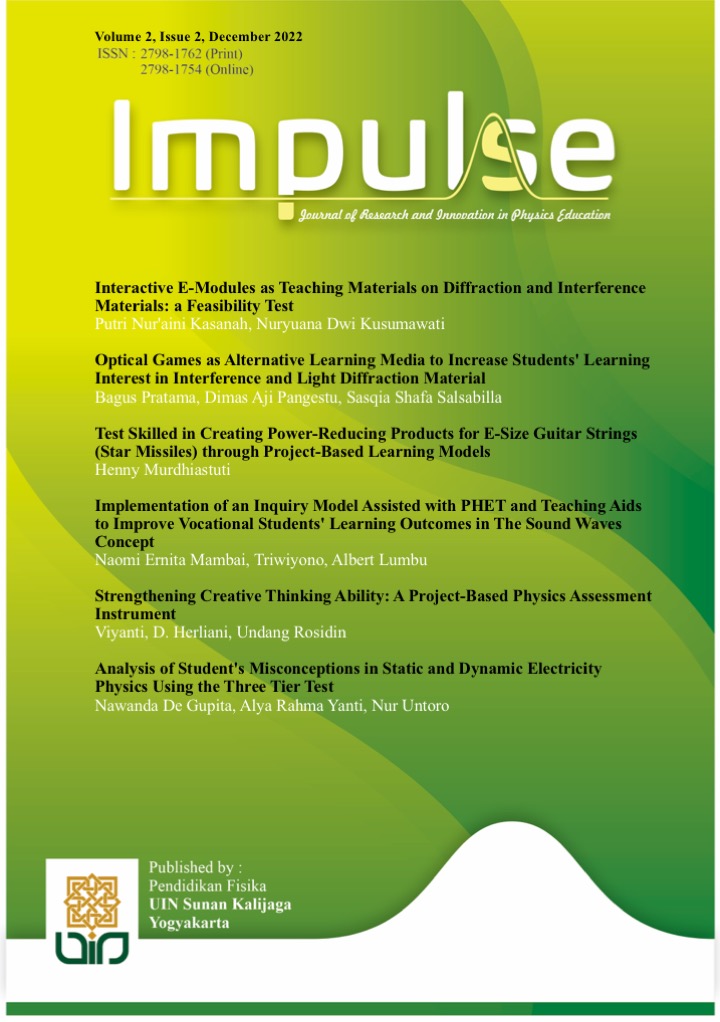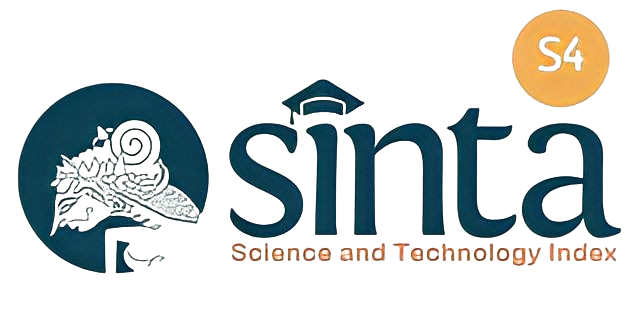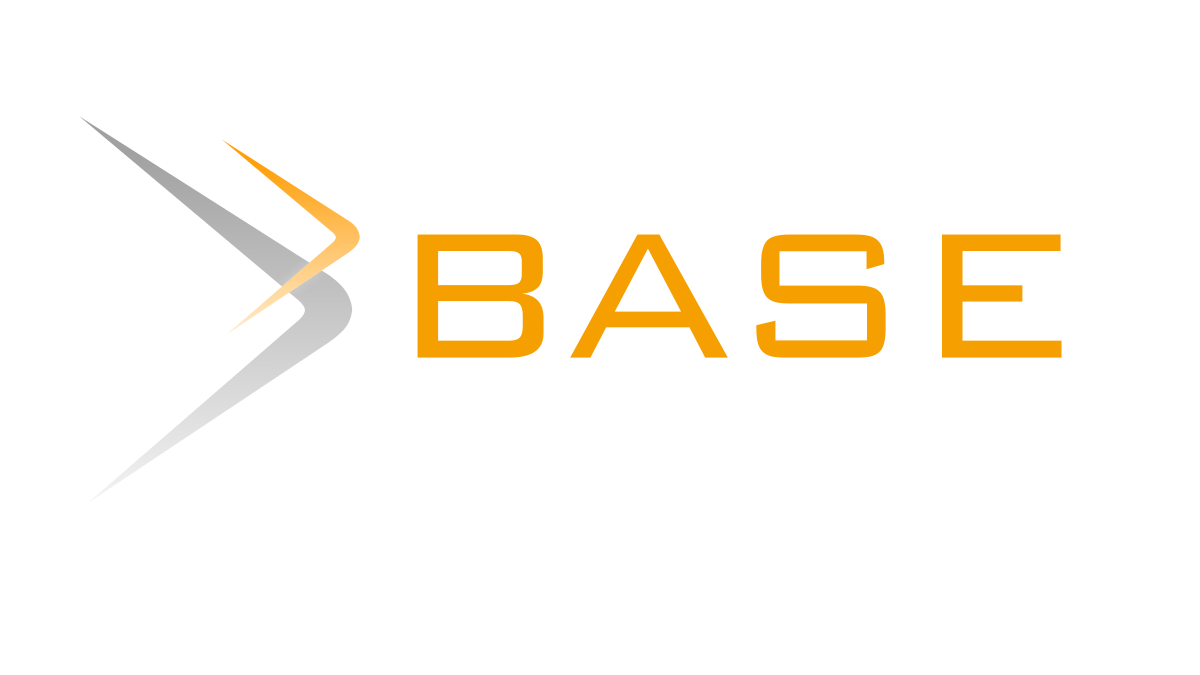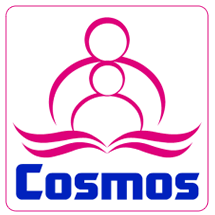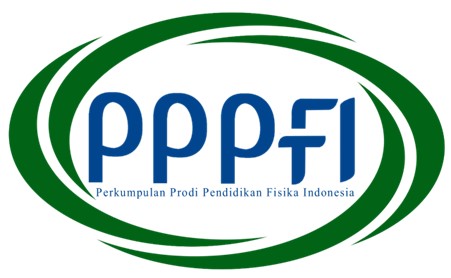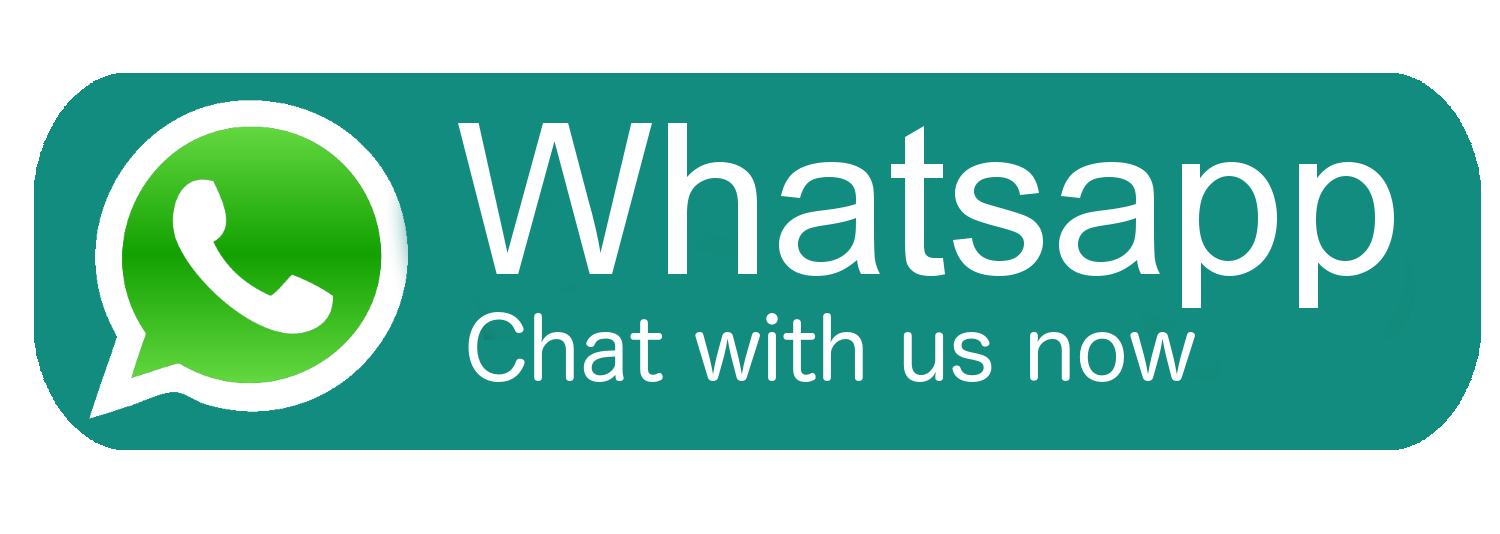Interactive E-Modules as Teaching Materials on Diffraction and Interference Materials: A Feasibility Test
DOI:
https://doi.org/10.14421/impulse.2022.22.01Keywords:
E-modul, interactive, teaching materials, diffraction, interferenceAbstract
The selection of learning teaching materials must be carried out as needed and can also utilize technology as a means of making interesting teaching materials. One of the learning teaching materials that can be used to easily understand the concepts of diffraction and interference and utilize technology is an interactive e-module equipped with learning videos. This is because learning about diffraction material and interference with physics requires visualization to improve students' understanding of the material. The research method used is Research and Development or R&D (Research and Development) with the ADDIE (Analysis, Design, Development, Implementation, Evaluation) model. Research and development of education (research and development) aims to produce new products through the development process. In this study, there was a limitation of steps from five steps to four steps to due diligence according to development needs. The results showed that the interactive e-module on the diffraction and interference material made by the researcher was suitable for use
Downloads
References
Dwiningrum, S. I. A., Basic Social Sciences & Culture (Ilmu Sosial & Budaya Dasar). Yogyakarta: UNY Press, 2012.
Toffler, A, The Future Shock. Translated by Hermawan Sulistyo. Jakarta: Pantja Simpati. 1992.
Cahyadi, R.A.H., “ADDIE Model-Based Teaching Material Development (Pengembangan Bahan Ajar Berbasis ADDIE Model)”, Halaqa Islam: Jurnal Edukasi, vol. 3, pp. 35–42, 2019.
Yati, W., Amini, R., “Development of Teaching Materials with a Tournament-Type Cooperative Learning Approach for Students in Grade IV Elementary School (Pengembangan Bahan Ajar Dengan Pendekatan Cooperative Learning Tipe Turnamen Pada Siswa Di Kelas IV SD)”, vol. 4, pp. 10, 2020.
Hall, M. C., Key Aspects of Competency-based Assessment. South Australia: National Center of Education Research, 2007.
Sudjana, N., Statistical Method (Metode Statistika). Bandung: Tristo, 2005.
Desyandri, D., “Development of Integrated Thematic Teaching Materials in Grade V Elementary Schools Using Problem Identification (Preprint) (Pengembangan Bahan Ajar Tematik Terpadu Di Kelas V Sekolah Dasar Menggunakan Identifikasi Masalah (Preprint))”. Ina-Rxiv, 2018.
Presiden Republik Indonesia. Law of the Republic of Indonesia No. 20 Year 2003 about National Education System (Undang-Undang Republik Indonesia nomor 20 tahun 2003 tentang Sistem Pendidikan Nasional), 2003.
Chodijah, S., A. Fauzi., R. Wulan, “Development of Physics Learning Devices Using the Guided Inquiry Model Equipped with Portfolio Assessment on Circular Motion Material (Pengembangan Perangkat Pembelajaran Fisika Menggunakan Model Guided Inquiry yang Dilengkapi Penilaian Portofolio Pada Materi Gerak Melingkar)”. Jurnal Penelitian Pembelajaran Fisika, vol.1, pp.1-19, 2012.
Hoellwarth, C., Moelter, M. J., & Night, R. D., “Direct Comparison of Conceptual Learning and Problem-Solving Ability in Traditional and Studio Style Classrooms”, American Journal of Physics, 459, 2005.
Herawati, N. S., & Muhtadi, A., “Development of interactive electronic modules (e-modules) in the subject of Chemistry class XI Senior High School (Pengembangan modul elektronik (e-modul) interaktif pada mata pelajaran Kimia kelas XI SMA)”. Jurnal inovasi teknologi pendidikan, vol.5(2), pp. 180-191, 2018.
Oka, A. A., “The Influence of Application of Independent Learning on Ecosystem Material on Critical Thinking Skills and Problem-Solving Ability of High School Students in Metro City (Pengaruh Penerapan Belajar Mandiri Pada Materi Ekosistem Terhadap Keterampilan Berpikir Kritis dan Kemampuan Memecahkan Masalah Siswa SMA di Kota Metro)”, Bioedukasi, vol,1(2), 2010.
Suryadie, Development of a Shared Type Integrated Science Electronic Module for Class VIII Students of SMP/MTs (Pengembangan modul elektronik IPA terpadu tipe shared untuk siswa kelas VIII SMP/MTs). Yogyakarta: UIN Sunan Kalijaga, 2014.
Mulyatiningsih, E., Applied Research Methods in the Field of Education (Metode Penelitian Terapan Bidang Pendidikan). Bandung: Alfabeta, 2012.
Mardapi Djemari, Educational Assessment & Evaluation Measurement (Pengukuran Penilaian & Evaluasi Pendidikan). Yogyakarta: Nuha Medika, 2012.

